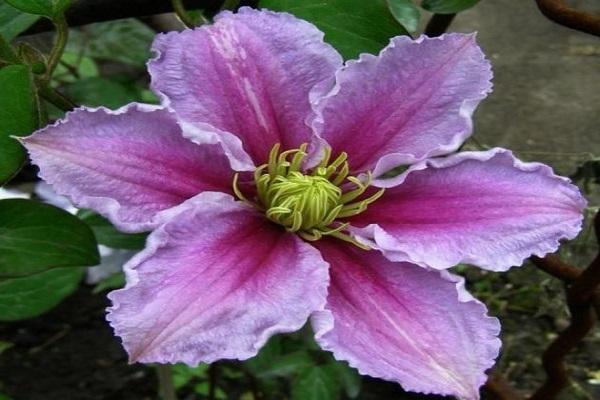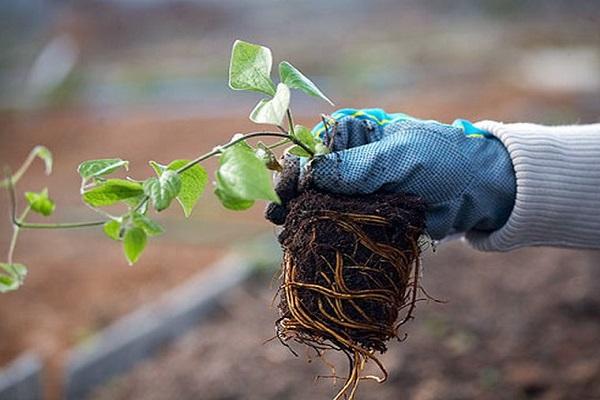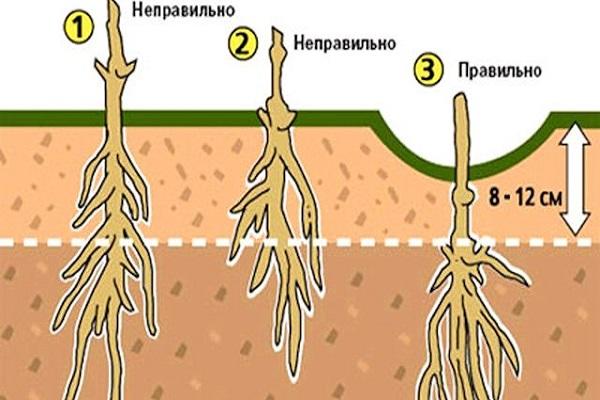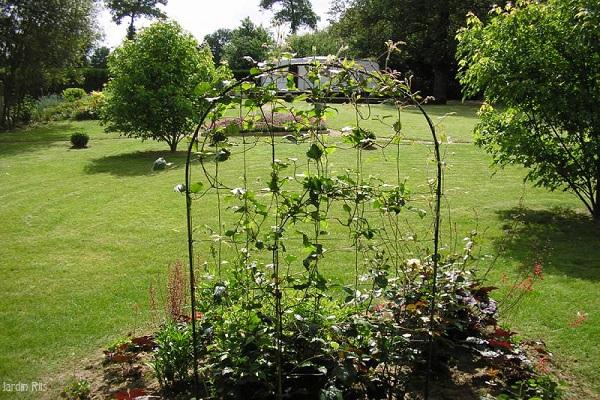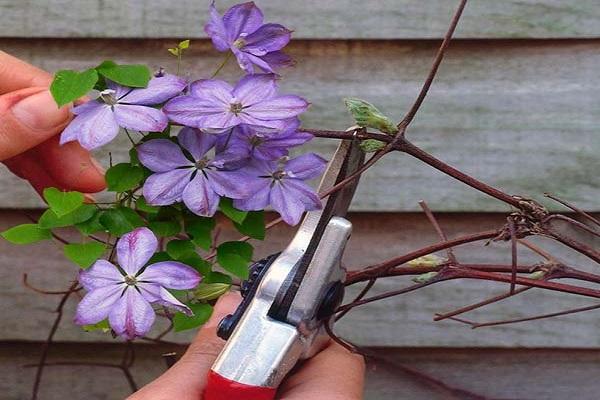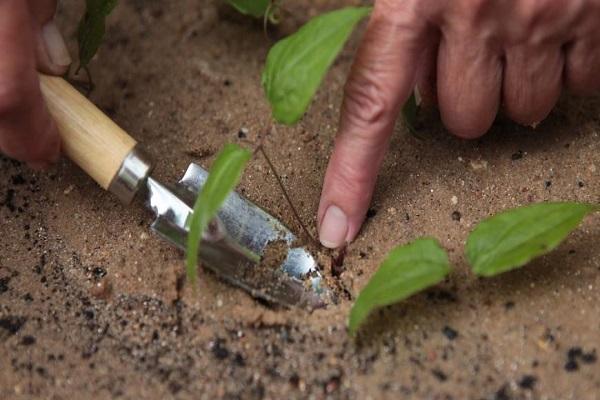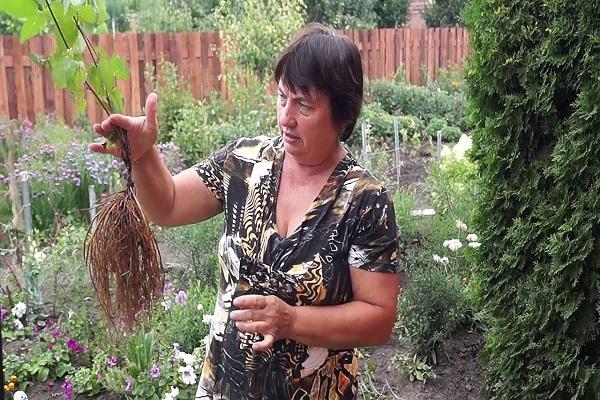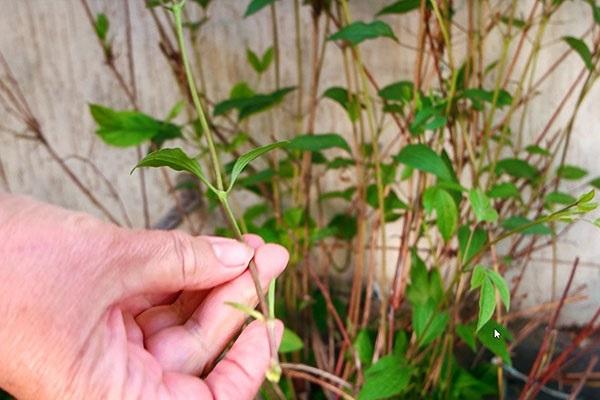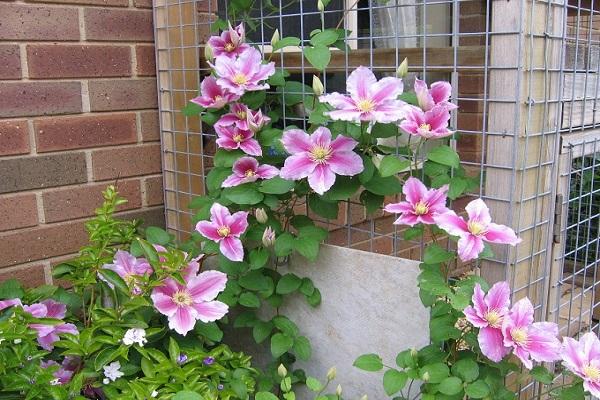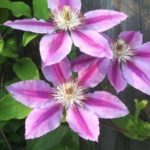Clematis have long won recognition among landscape designers, flower growers and gardeners. The variety of varieties and varieties of flowering vines allows you to create unique flower arrangements, decorate balconies, loggias and add an unforgettable atmosphere to your garden plot.
- Description and characteristics of the variety
- History of selection
- Landing
- Selecting a location
- Soil requirements
- Deadlines
- Planting scheme
- Rules of care
- Watering
- Top dressing
- Trimming
- Support
- Loosening and weeding
- Pruning rules
- Preparing for winter
- Reproduction
- Seeds
- Dividing the bush
- Cuttings
- Use in landscape design
- Reviews
The first mention of clematis dates back to the 16th century.Over 5 centuries, breeders have created many different hybrids of this garden flower. A special place among garden crops is occupied by clematis variety Piilu, which differs from its relatives in its compact size and huge, double inflorescences.
Description and characteristics of the variety
The flowering liana piilu is considered one of the shortest among its fellows. Mature plants reach no more than 1.5 m in height and 60-80 cm in width. In regions with a cold climate and a short summer period, the bushes stop developing when they grow from 70 to 90 cm.
The leaves are oval-shaped with pointed tips, in bright, green shades. Each branch grows from 3 to 5 leaves. The root system of an adult plant is well developed, fibrous.
The flowers of the hybrid clematis Piilu have special decorative properties. Although the bushes are small, large flowers bloom from 12 to 14 cm in diameter, in the shape of a three-dimensional star, in all sorts of pink and purple shades.
Important! This variety of garden crop blooms in several stages. In spring, double, multi-level inflorescences of the main bush bloom. But at the end of July, the shoots of the current season enter the active flowering phase, on which large but ordinary flowers with 5-6 petals bloom.
History of selection
Clematis Piilu was developed from a flower variety called Spreading. A famous Estonian breeder obtained a new type of frost-resistant hybrid plant in the mid-80s of the last century. The scientist tested the plant for several years, and only after almost 10 years, the new hybrid variety of clematis was approved for cultivation in gardens and household plots.
Landing
Although Clematis Piilu is considered an unpretentious plant to care for, mistakes made when planting flowers in open ground will affect the development, growth and flowering of the garden crop.
Selecting a location
When choosing a place to plant flowers, take into account the following requirements:
- The planting area should be well lit, but at the same time slightly shaded.
- Damp, swampy soil and stagnant groundwater are detrimental to flowering vines.
- The site is selected dry, on a slight hill.
- The plant does not tolerate gusty winds and drafts.
When exposed to direct sunlight, beautiful flowers quickly fade and lose their decorative effect.
Soil requirements
Flowering liana is demanding on the composition of the soil. Light and loose fertile soil is most suitable for planting plants.
Clematis are long-lived plants. The liana can grow and bloom in one place for more than 20 years. When preparing a site for planting seedlings, this feature of flowers is taken into account and peat, humus, sand and fertilizers are added to the soil.
Deadlines
The timing of planting garden crops in open ground is calculated from the climatic characteristics of the area where the flowers will grow.
In southern climates, plants are planted in autumn. They will have time to take root and easily endure a mild winter.
In temperate and northern climates, spring is the best time of year for planting clematis Piilu. During the warm period, the seedlings will take root, and the root system of the plant will grow and strengthen.
Planting scheme
Before planting in open ground, seedlings are carefully inspected for damage, fungal diseases and pests. The rhizomes of young plants should be well developed and moistened.After inspection, the seedlings are treated with antibacterial agents and a growth stimulant.
- In the prepared area, holes are dug ranging in size from 60 to 80 cm in depth and width. The distance between seedlings is from 70 to 90 cm.
- Place small stones or crushed stone at the bottom of the holes, and install a peg to support the plant.
- Fertile soil is poured onto the drainage, in which the seedling is placed.
- The rhizomes of the plant are evenly distributed in the hole and sprinkled with earth.
- The planted flower is watered and tied to a support.
- The soil around the vine is mulched with dry sawdust or grass.
Advice! To prevent clematis rhizomes from overheating, annual plants are planted around the flowers, which will prevent direct sunlight from reaching the soil.
Rules of care
Clematis Piilu does not require additional care. It is enough to water, feed and prune the plant in a timely manner.
Watering
The flowering vine does not tolerate severe waterlogging of the soil and air. But prolonged drought is destructive for the plant.
In adult bushes, the root system is deep, so up to 30-40 liters of warm, settled water are poured under each bush. In hot and dry seasons, young seedlings are watered 2-3 times a week. Up to 20 liters of life-giving moisture are poured under the bush.
Top dressing
They begin to feed the vine in the second year of growth. During the entire growing season, the plant is fertilized no more than 4 times, using alternately organic and mineral fertilizers.
- The first feeding takes place at the very beginning of spring.
- The next stage of work is carried out during the formation of buds.
- The vine will need additional nutrients during the first phase of flowering, when multi-layered inflorescences bloom.
- The plant is fed the last time before winter rest.
Timely application of fertilizers and fertilizing promotes the rapid growth, development and abundant flowering of clematis.
Trimming
To ensure that the vine delights with lush and large flowers every year, pruning activities are carried out.
In the spring, sanitary pruning is carried out, removing frozen, damaged and dried shoots.
Main works on Clematis pruning is carried out in the fall, before a long winter.
Support
A support to support the vine is installed at the time of planting the plant in open ground. During the first years of life, clematis is directed in the right direction and, if necessary, the vine is tied up at new levels. As soon as clematis develops its root system, the plant no longer needs additional fixation and covers any vertical support on its own.
Loosening and weeding
Garden culture has a negative attitude towards the proximity of weeds. They take the necessary nutrients and moisture from the soil. Therefore, weeding a flower bed is a necessary agricultural technique. To prevent weed control, most gardeners recommend mulching the soil around plants.
Work on loosening the soil helps saturate the rhizomes with oxygen and controls soil moisture.
Pruning rules
Since bud formation occurs on both old shoots and new cuttings, clematis Piilu belongs to the plants of the second pruning group. At the end of autumn, all shoots of the vine are cut off, leaving branches with vegetative buds from 50 to 100 cm above the soil surface.
When rejuvenating pruning, vine branches are removed to the maximum level, and weak and diseased shoots are cut off completely.
Important! In regions with cold winters and prolonged frosts, shoots are left much shorter for the winter.
Preparing for winter
Although clematis variety Piilu is considered a frost-resistant crop that can easily tolerate temperatures down to -30 degrees, preparatory work for wintering is still carried out.
- In late autumn, the remaining leaf cover is removed from the pruned vine.
- If summer and autumn were dry, then the plant is watered abundantly.
- Carry out preventive treatment against pests and diseases. Bushes and root collars are treated with preparations containing copper.
- The rhizomes of the plants are covered with spruce branches or dry leaves, and then covered with special materials.
- The vines are removed from the support posts and placed on the prepared surface.
- The vines are covered with pine branches on top, sprinkled with earth and covered with a wooden box, which is wrapped in film.
Remove the cover from the flowering vine at the first spring thaw.
Reproduction
To create beautiful flower arrangements in your garden, clematis are propagated. There are several known methods for propagating this garden plant.
Seeds
According to gardeners, seeds grow into healthy, full-fledged plants that quickly develop and grow.
- The seed material is sent into the cold for 1.5-2 hours.
- After the seeds are removed from the freezer, they are kept warm for 2-3 hours. Such activities are repeated twice, thereby hardening and disinfecting the planting material.
- Next, the seeds are kept in growth-stimulating preparations for 2 hours and dried.
- All planting material is placed in a small container, which is covered with a jar or film.
Important! Until the grains germinate, the small greenhouse is ventilated every 2-3 days. When the first shoots appear, the seeds are planted in open ground..
Dividing the bush
The easiest way to propagate clematis is to divide the bushes. In this way, plants that have reached 4-5 years of age and have a formed root system are propagated and rejuvenated.
The vine is dug up on one side and the young shoots along with the rhizome are carefully separated from the mother plant using a knife. Separated shoots are planted in open ground as independent plants.
Cuttings
Using the cutting method, strong, viable seedlings are obtained that can bloom from the first year of life in open ground.
On an adult vine, the strongest branches are selected and cut off. From one clematis branch several cuttings are obtained at once. The main thing is that each seedling has 2-3 vegetative buds.
The cuttings are treated with agents to stimulate growth and planted in pots with fertile soil. The planted plants are moistened and covered with film or glass.
When the first roots form on the cuttings, they are kept for another 3-4 weeks and planted in open ground.
Use in landscape design
The flowering liana Piilu is used to create hedges, alpine compositions, arches and decorative screens. Landscape designers, using beautiful shrubs, create unique flower beds and garden compositions.
Reviews
Irina Sergeevna. Permian.
Last spring we bought Piilu clematis seedlings and immediately planted them in our garden plot. To my surprise, it bloomed already in the first year of growth. There were a lot of flowers, but they were all simple, because the plant had just been planted. The bushes were well insulated for the winter; we have harsh winters. Now we are waiting to see what the new flower will bring us this year.
Ivan Grigorievich. Moscow region.
There has never been a dacha, but my wife loves flowers very much, so she grows them on the loggia. Last year we decided to buy something creeping and curly. We chose clematis Piilu and did not regret it. Already in the first year, the plant began to bloom with large, bright and most importantly fragrant flowers.
Kristina Leonidovna. Novosibirsk
I have been growing clematis varieties Piilu for many years. The youngest bush is already 7 years old. But for some reason, it was on it that the flowers began to become smaller, although older plants bloom normally. I read on the Internet that this happens due to the deepening of the roots. In the spring I will try to revive the vine and return it to normal flowering.

